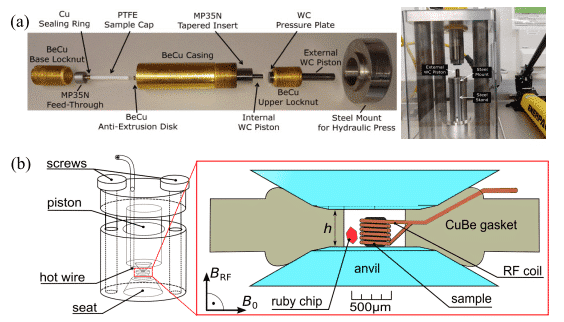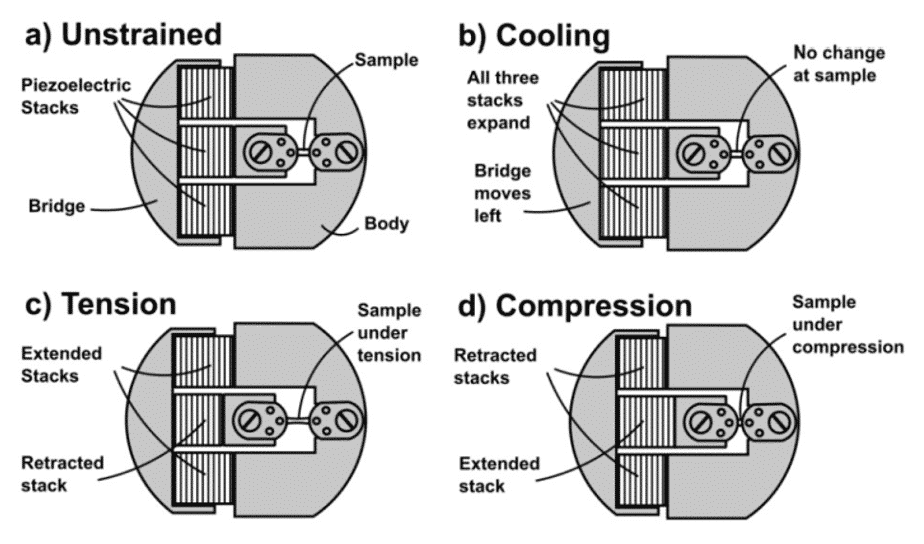
Novel metallic states in doped quantum ferroelectrics and superconductivity mediated by polar modes in ferroelectric metals.
Understanding the physics of quantum materials is a frontier challenge for modern physics. I research combining material synthesis and equipment engineering with electrical measurements and theoretical modelling.
I focus on tuning the ferroelectric phase transition to absolute zero using pressure(by piston cell and Diamond Anvil cell), chemical substitution(both A-site and B-site doping in perovskite), or uniaxial stress(by uniaxial stress cell). (Fig.1) At zero temperature, the phase transition supported by quantum fluctuations is called a quantum phase transition. Quantum critical fluctuations persist over a wide range of temperatures and tuning parameters. Such fluctuations may cause abnormal thermodynamic and electrical characteristics. I use low-temperature refrigerators to measure physical quantities down to the millikelvin range(40 mK) and understand them through phenomenological models.


Recent studies have shown how to dope or inject mobile electron carriers into quantum ferroelectrics through voltage gates or chemical doping, or oxygen reduction. My talk involves investigating an unconventional metallic state in electron-doped SrTiO3(Pure SrTiO3 is quantum paraelectric at low temperature) and electron-doped BaTiO3(Pure BaTiO3 is ferroelectric at low temperature)(Fig.2) in which the resistivity varies as temperature-squared but seemingly not originating from a Fermi-liquid state. I describe the background of this behaviour and outline experiments to investigate this puzzling phenomenon.

At low carrier densities, it can be observed that the conduction electrons interact strongly in doped quantum critical ferroelectrics. The electron liquid forms a superconducting state below 1K in electron-doped SrTiO3. It has been proposed that superconductivity can arise in such materials due to the exchange of so-called longitudinal hybrid polar modes. These modes are essentially incompletely screened ionic fluctuations and provide a strong electron-electron attraction on the scale of Coulomb energy. My talk involves identifying and investigating ferroelectrics that may be tuned to quantum critical points in the presence of a low density of charge carriers. These materials may be found to be new superconductors in which electron-pairing states originate from this new pairing mechanism involving polar modes.
Powered by Eventact EMS
